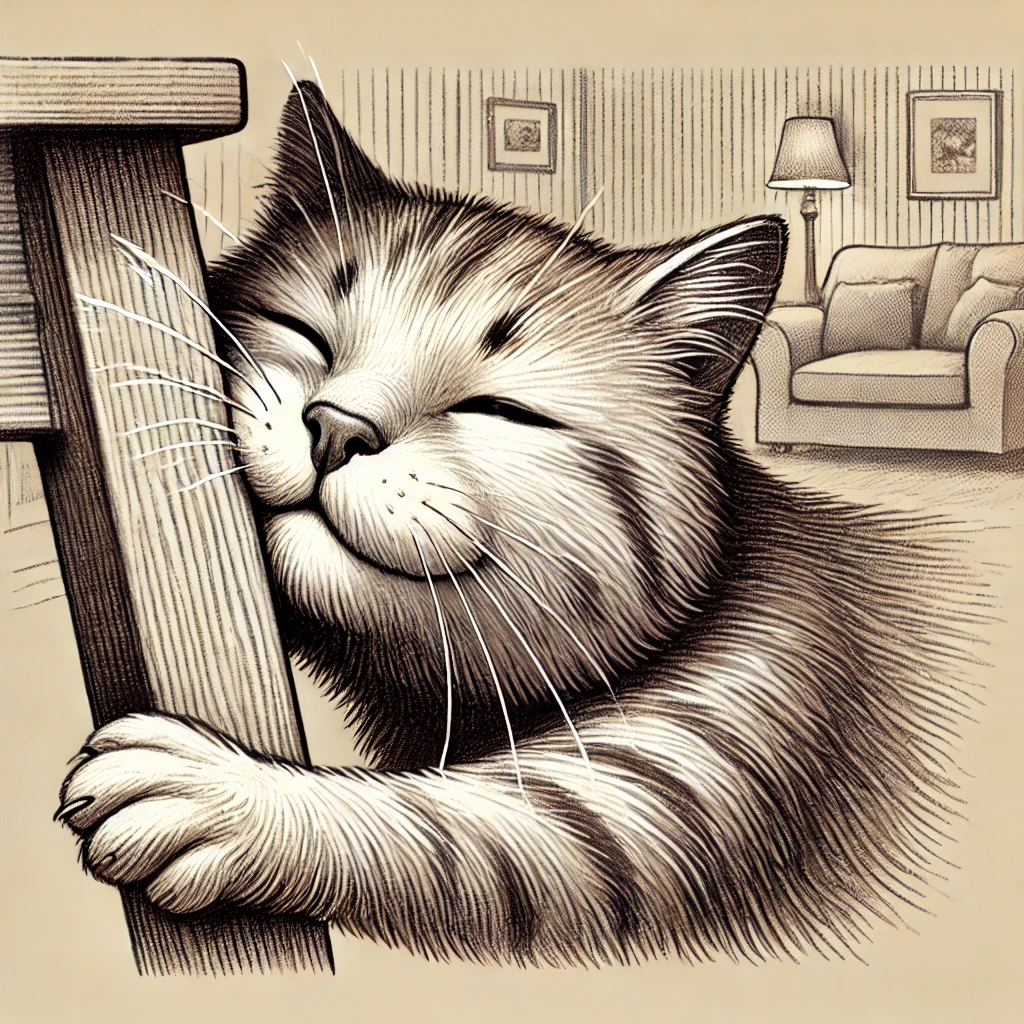Discover how cats use scent marking behaviors like rubbing and spraying to convey messages and establish social bonds.
Introduction
Have you ever wondered why your cat rubs against your legs or scratches certain spots in your home? The answer lies in cat scent marking, a vital aspect of feline communication. Cats use their sense of smell to convey messages, establish territory, and build social bonds. Understanding the importance of scent in cat communication can help you better manage your cat’s environment and reduce unwanted behaviors.
The Importance of Scent in Cat Communication
Cats have a highly developed sense of smell, which they use to interact with the world around them. Scent marking allows cats to communicate with other cats and even with humans.
- Olfactory Communication: Cats rely on scents more than vocalizations to share information.
- Chemical Signals: They use pheromones, which are chemical substances that trigger social responses in members of the same species.
- Environmental Awareness: Through scent, cats can learn about the presence, identity, and reproductive status of other cats.
By understanding how cats perceive and use scents, we can gain insights into their behavior and needs.
Different Methods of Scent Marking
Cats have several methods of scent marking, each serving a unique purpose.
Rubbing (Bunting)
- Cheek Rubbing: When a cat rubs its cheeks against objects or people, it’s depositing pheromones from glands located on its face.
- Head Butting: Also known as bunting, this is a friendly gesture indicating affection and marking territory.
- Body Rubbing: Rubbing their bodies against furniture or your legs spreads their scent and signifies comfort and ownership.
Scratching
- Claw Marks: Scratching leaves visual marks but also deposits scent from glands in their paws.
- Territorial Signals: Scratching is both a physical and chemical way to mark territory.
- Stress Relief: It can also be a way for cats to relieve stress or excess energy.
Spraying (Urine Marking)
- Vertical Surfaces: Spraying involves releasing a small amount of urine onto vertical surfaces.
- Communication: It conveys messages about territory, reproductive status, and stress.
- Common in Unneutered Cats: Spraying is more prevalent in unneutered males but can occur in any cat.
Fecal Marking
- Middening: Rarely, cats may leave feces uncovered as a form of marking.
- Territory Boundaries: This is more common in outdoor cats to mark territory boundaries.
Understanding these methods helps identify why your cat is engaging in certain behaviors.
Reasons Behind Rubbing, Scratching, and Spraying
Establishing Territory
- Ownership: By depositing their scent, cats claim ownership over objects and areas.
- Security: Scent-marked areas feel safe and familiar to them.
Social Bonding
- Affection: Rubbing against humans or other cats strengthens social bonds.
- Group Scent: In multi-cat households, shared scents promote harmony.
Reproductive Signals
- Attracting Mates: Unneutered cats may spray to signal reproductive availability.
- Deterring Rivals: Scent marking can warn other cats to stay away.
Stress and Anxiety
- Coping Mechanism: Increased scent marking can be a response to stress or changes in the environment.
- Attention-Seeking: Sometimes, cats may spray to get attention if they’re feeling neglected.
By identifying the underlying reasons, you can address the root cause of the behavior.
How Scent Marking Establishes Territory and Social Bonds
Territory Establishment
- Defining Boundaries: Scent marks outline a cat’s territory, reducing conflicts with other cats.
- Preventing Intruders: The presence of their scent deters other cats from encroaching.
Social Bonds with Humans
- Marking Humans: When your cat rubs against you, they’re marking you with their scent, signifying that you’re part of their social group.
- Shared Scent: This mutual scent exchange strengthens the bond between you and your cat.
Communication with Other Cats
- Information Exchange: Cats can learn about other cats in the area through scent marks.
- Hierarchy Establishment: Scent marking helps establish social hierarchies among cats.
Understanding the role of scent in social bonding can enhance your relationship with your cat.
Managing and Reducing Unwanted Scent Marking
Spay or Neuter Your Cat
- Hormonal Influence: Neutering reduces the urge to spray in most cats.
- Behavioral Benefits: It can also decrease aggression and roaming behaviors.
Provide Adequate Resources
- Litter Boxes: Ensure you have enough litter boxes (one per cat, plus one extra) to prevent territorial disputes.
- Scratching Posts: Provide appropriate scratching surfaces to satisfy your cat’s natural instincts.
- Safe Spaces: Create hiding spots and elevated areas where your cat can retreat.
Maintain a Consistent Environment
- Routine: Cats thrive on routine. Keep feeding times and daily activities consistent.
- Reduce Stress: Minimize changes in the household that can cause anxiety.
Use Pheromone Products
- Synthetic Pheromones: Products like Feliway mimic natural cat pheromones to reduce stress and marking behaviors.
- Apply in Problem Areas: Use them in areas where your cat frequently marks.
Clean Marked Areas Thoroughly
- Enzymatic Cleaners: Use products that break down urine proteins to eliminate scent.
- Avoid Ammonia Cleaners: These can smell like urine to cats and encourage more marking.
Consult a Veterinarian or Behaviorist
- Medical Issues: Rule out any underlying health problems that may cause inappropriate marking.
- Professional Guidance: A cat behaviorist can provide tailored strategies for your situation.
By taking these steps, you can manage and reduce unwanted scent marking in your home.
Conclusion
Understanding cat scent marking behaviors like rubbing, scratching, and spraying is essential for creating a harmonious environment for both you and your feline friend. Recognizing the importance of scent in cat communication allows you to address their needs effectively and reduce unwanted behaviors. By managing their environment and providing appropriate outlets for scent marking, you can improve your cat’s well-being and strengthen your bond.






